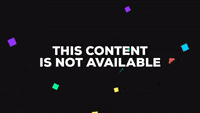SlowsailNC
Veteran Member
This really should not be that difficult but then again I've been wrong before. PLEASE OFFER SUGGESTIONS!
First time changing the raw water impeller on our 6BTA5.9. It still has the Sherwood pump.
Got the old impeller out okay and the new impeller is in . . .. almost.
The impeller vanes are slightly proud of the sealing face of the pump and if I dry fit the Speedseal cover it rocks slightly.
I have the original pump cover and bolts and found a hard rubber disk that is app. the same size as the impeller hub. Stuck the rubber disk to the center of the old cover using a dab of grease, put it against the impeller hub and then used the bolts to try and drive the impeller the last fraction of inch onto the shaft.
Took the bolts to dead tight, removed them and the impeller had not budged. Still slightly proud of the sealing surface.
What's next??
Thanks,
Gene
First time changing the raw water impeller on our 6BTA5.9. It still has the Sherwood pump.
Got the old impeller out okay and the new impeller is in . . .. almost.
The impeller vanes are slightly proud of the sealing face of the pump and if I dry fit the Speedseal cover it rocks slightly.
I have the original pump cover and bolts and found a hard rubber disk that is app. the same size as the impeller hub. Stuck the rubber disk to the center of the old cover using a dab of grease, put it against the impeller hub and then used the bolts to try and drive the impeller the last fraction of inch onto the shaft.
Took the bolts to dead tight, removed them and the impeller had not budged. Still slightly proud of the sealing surface.
What's next??

Thanks,
Gene




